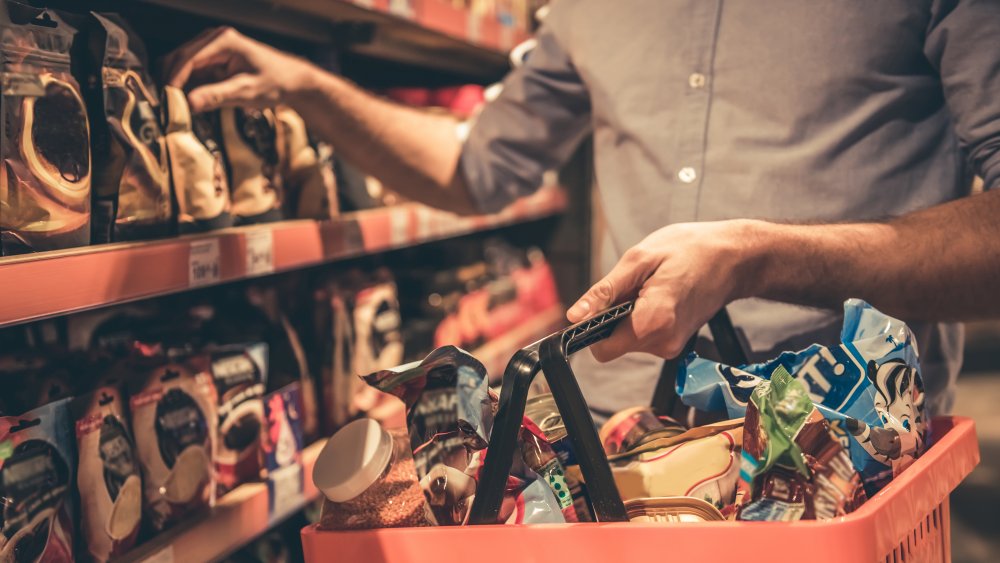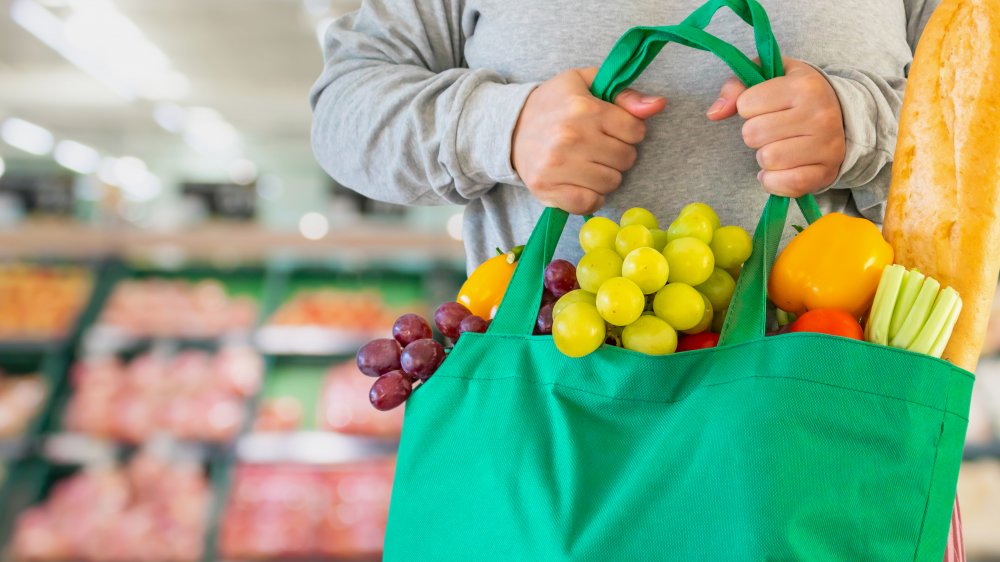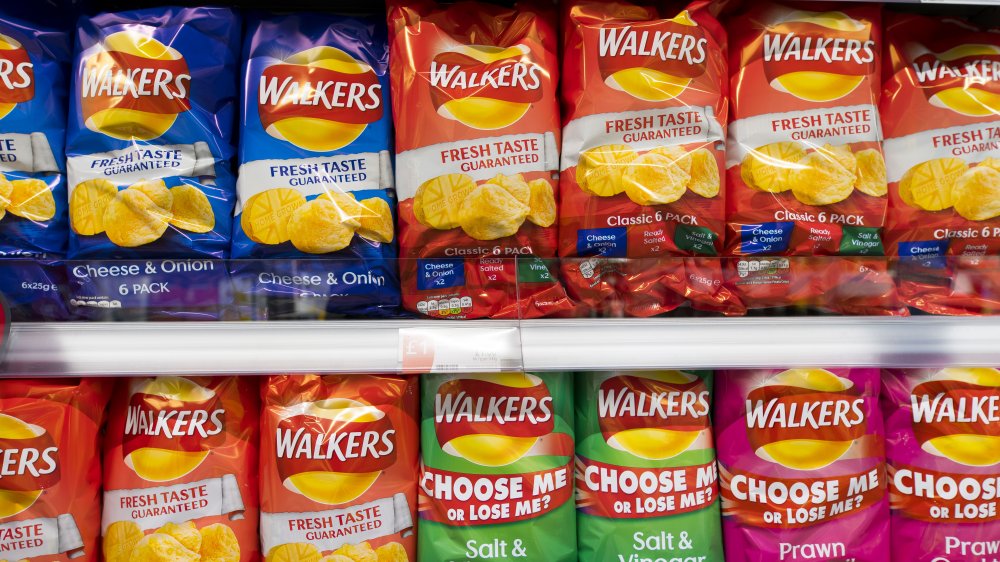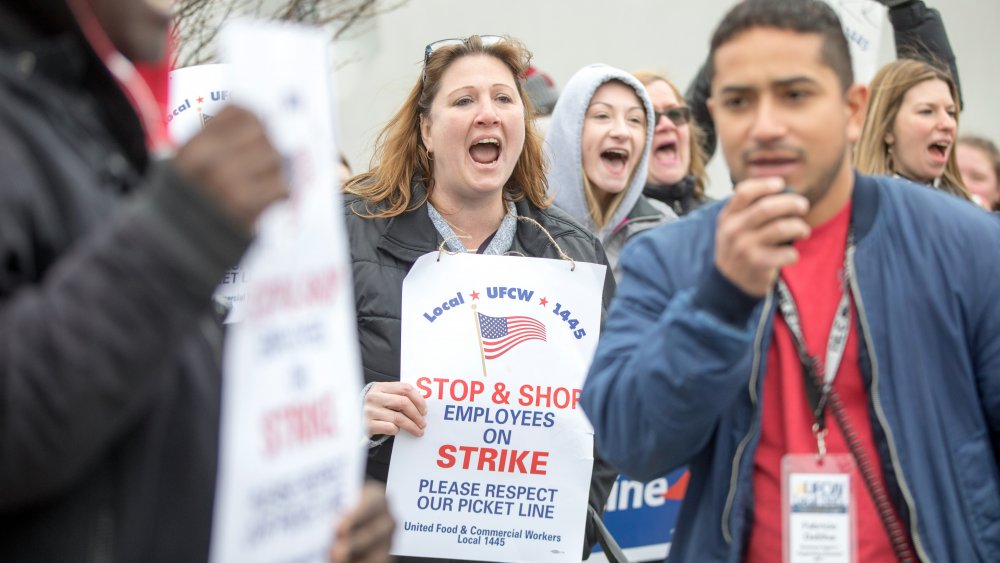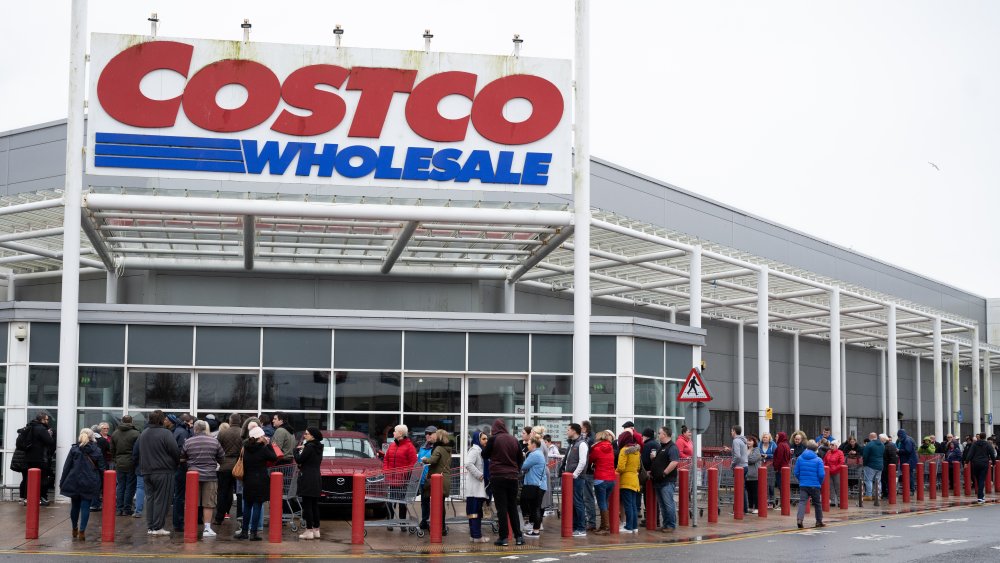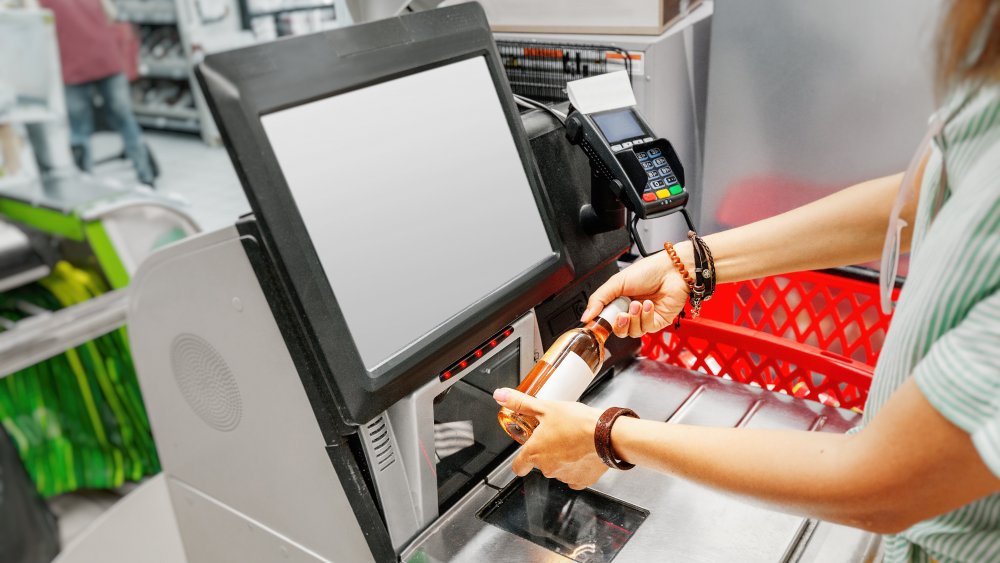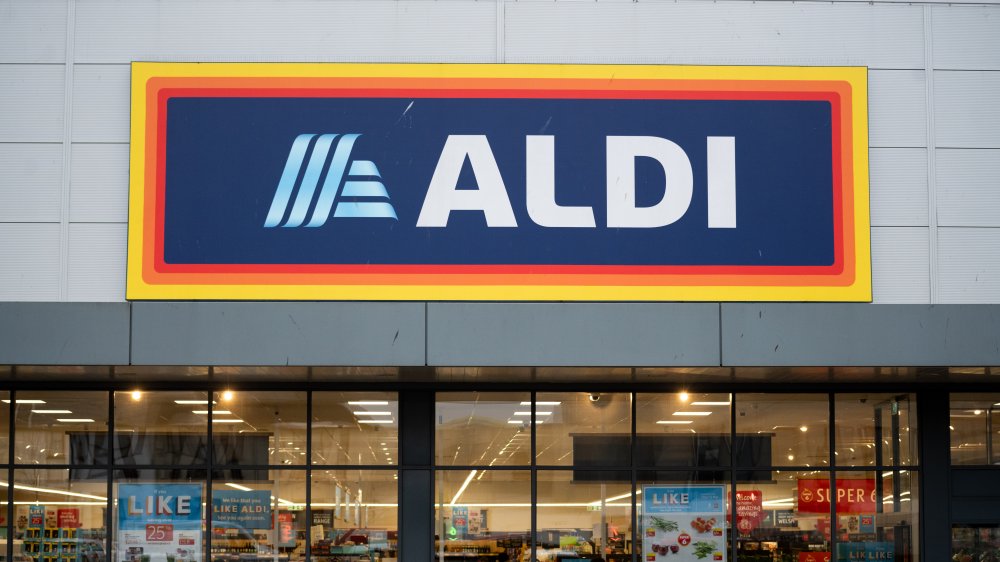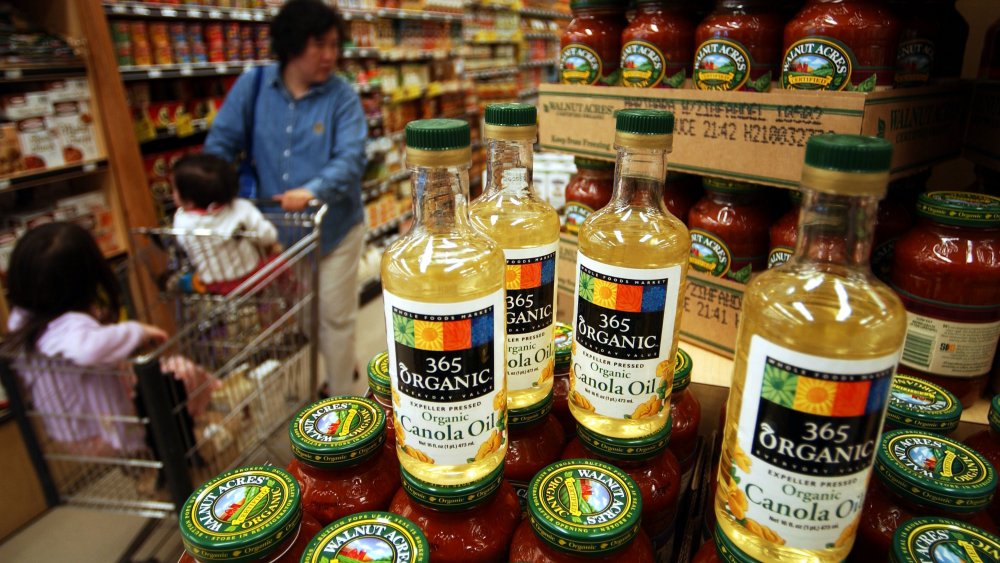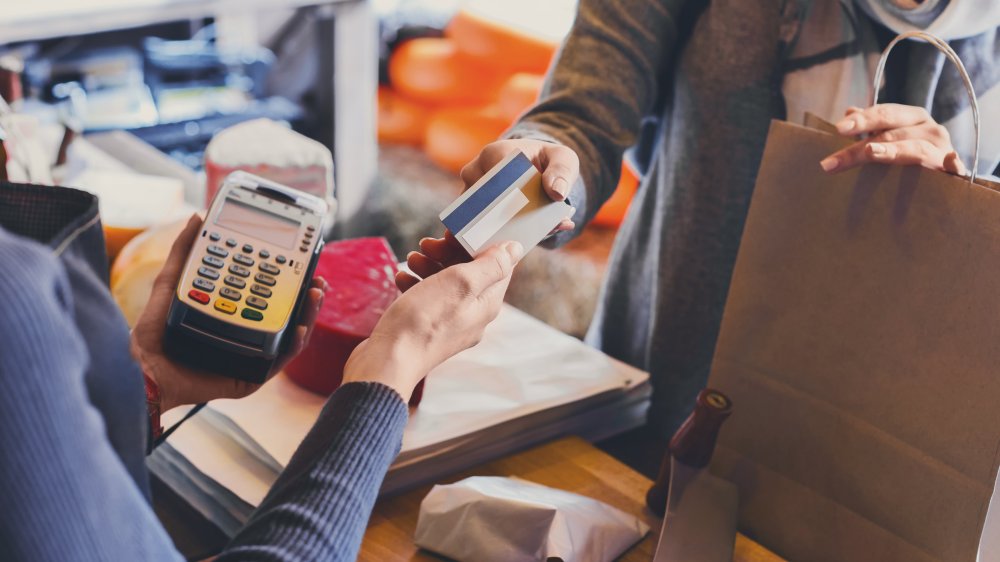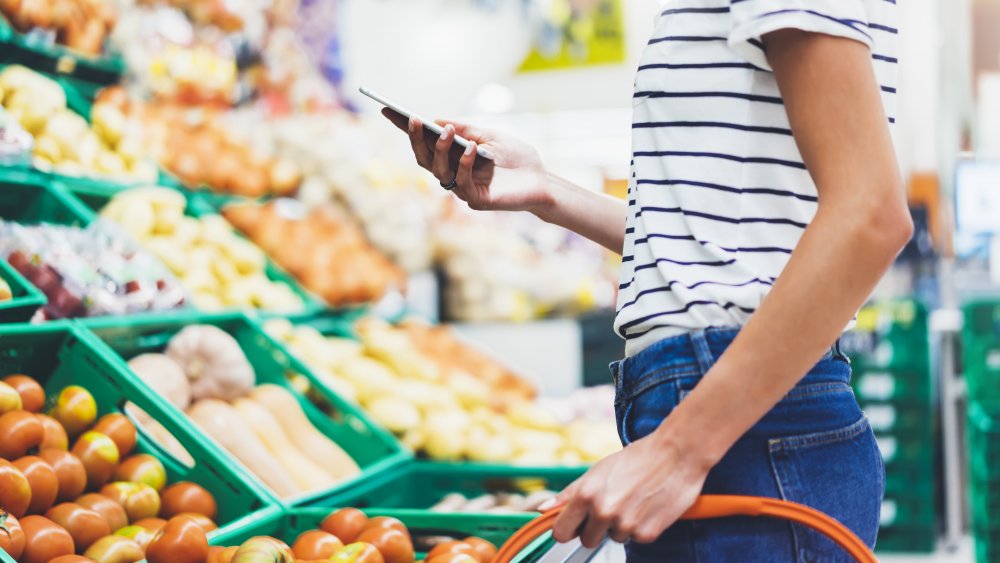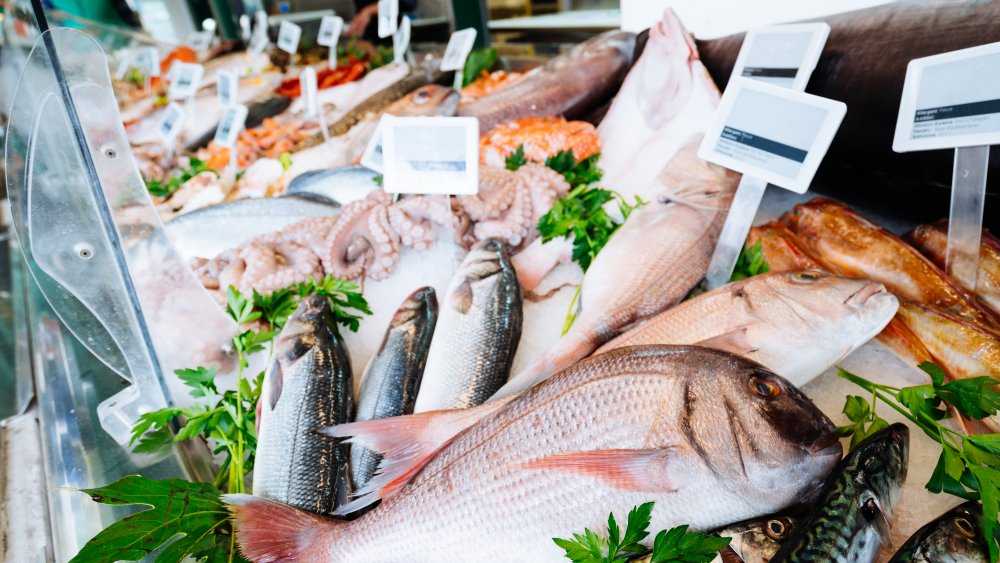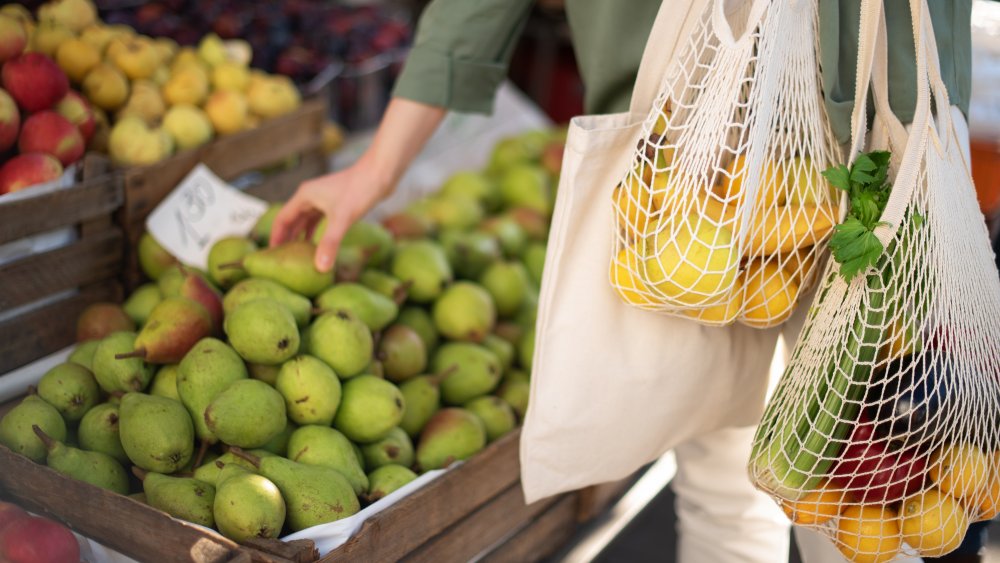The Shady Ways Grocery Stores Keep Prices Low
We may receive a commission on purchases made from links.
Grocery stores are playing a tough game. They're competing with large competitors, discount chains, and the pressure of online retail. These days, shoppers can easily compare prices and find almost anything at their fingertips — at nearly any price point. A few major chains have changed the landscape of grocery stores in the last 40 years. Former seasonal discounts are now everyday low prices thanks to global retailers that continue to drive down prices. Discount retailer Aldi expanded rapidly across the U.S. in the last 10 years due to its popularity with even higher income families after the Great Recession.
It's been rumored that brick-and-mortar stores are disappearing, but thanks to their low prices, that's nothing more than a nasty rumor. Even with those low prices, though, grocery stores and supermarkets are seeing increased revenues year after year, with $683 billion in revenues in 2019.
How are grocery stores able to deliver such low prices to consumers and still make record profits? Some stores are using tactics they'd prefer customers would just ignore. Here are some shady practices grocery stores use to keep prices low.
Grocery stores distort prices of popular items like milk and eggs to get you in the store
Retailers often entice customers by discounting some common merchandise designed to bring shoppers in the door. The business will actually lose money on these items, hence the term "loss leaders." Popular loss leaders are milk, eggs, and razors. Once customers are in the store, they might buy a larger quantity of the discounted item, as well as other add-ons based on impulse purchasing. NPR even debated if grocers keep loss leaders like milk and bread in opposite corners of the store to force customers to walk by more than just essentials, increasing their chances of picking up more items along the way.
Grocers are betting those impulse purchases, as well as future purchases, will make up for the loss they face with those impossibly low prices.
While U.S. law technically prohibits the widespread use of selling at a loss, this tactic is often abused by chain stores with deep pockets. Smaller grocers can't absorb similar deep discounts long-term, leading to the closure of competitors. Amazon and Walmart are infamous for exploiting discounts on an unprecedented scale. In the case of Walmart, the ambitious retailer battled a lawsuit in the early '90s for so-called "predatory pricing," unfairly undercutting the competition in local markets. The Arkansas Supreme Court, however, ruled in favor of Walmart's low prices. Today, after less than two decades, the household name receives $1 in every $4 from U.S. shoppers buying groceries.
Grocery stores turn customers into baggers
In hard-lined discount stores, customers are sometimes replacing paid employees at the end of the checkout process in exchange for lower prices — though they may not realize it. The popular German import Aldi comes to mind for requiring customers to bag their own groceries once they've completed checkout. Grocery stores Costco, Sam's Club, Natural Grocers, and Lidl, another German retailer, use the same no-baggers policy. The move for customers to act as a bagger is attributed to freeing up the cashier to keep the line moving faster.
At Aldi, cashiers drop groceries right back into the cart. This reasoning ignores the fact that by eliminating the traditional role of baggers, they're also eliminating an additional employee who would otherwise be paid. This role is now filled by bargain shoppers, sorting through carts and vying for the best boxes left out by the store. The reduced labor costs mean savings, but it's paired with an added headache for shoppers.
Grocery stores keep prices low by selling only fast-moving products
Certain budget grocery stores only offer products with high turnover to eliminate the added overhead. The popular discount grocer Aldi stocks around 1,400 unique items and Lidl around 4,000 items at any given time. Other mid-sized stores such as Traders Joes stocks around 4,000 different items and Dollar General carries from 10,000 to 12,000 per store. In comparison, traditional supermarkets carry 40,000 or more different products. By comparison, Walmart carries around 100,000.
Limited items on shelves result in lower cost to the grocery store, which often means lower prices for shoppers. Unfortunately, it also means fewer options for shoppers. If customers are dedicated to a specific name brand, or even an item that isn't a frequent buy for most customers, they may need to make additional trips to other stores. Shopping at multiple locations can then cost more in gas money and time (as well as impulse purchases picked up at each store). When you look at it like that, the only one saving money on this low-price strategy is the grocery chain.
Grocery stores strong-arm suppliers into selling impossibly low-cost food
When supermarkets and big-box grocers control a majority of the given market, it creates an imbalance between producers and retailers. Powerful chain stores such as Walmart turn their massive buying power against suppliers, who are forced to match bargain-basement prices or be left out of the equation entirely. Forcing suppliers to offer lower prices often results in lower prices for customers — but it also results in layoffs at factories, changes in manufacturing, and certain processes heading overseas where labor is cheaper.
Chain grocery stores' that engage in race-to-the-bottom pricing might pay growers and producers below the real cost to produce, raise, and process what's stocked on the shelves. It's gotten to the point where many farmers in the U.S. and elsewhere make little profit. Despite grueling often dangerous conditions, workers also receive low wages, keeping families precariously near or below the poverty line. The effect of grocery stores demanding unsustainable prices trickles through the supply chain. Grocery stores with over-sized control results in shoppers being misled about the actual cost of food, expecting (and often getting) low-priced groceries at the expense of suppliers.
Low wages and little benefits for employees keep prices competitive
Some major chains have sparked controversy over grocery store employees who say they are overworked and underpaid, despite grocers making record profits. Workers claim to be forced into part-time work without benefits, and struggle to access paid leave even when sick. Minimum wage earners at grocery stores say they are living below the poverty line.
Employees at Northeast grocery store Stop & Shop picketed in 2019 due to reduced benefits such as elimination of holiday pay and higher health care costs. Eater reported the store claimed the move helped the brand to stay competitive — meaning they cut those employee benefits in order to offer lower prices to customers. Still, Eater says that parent company made $2 billion in profits the previous year.
Discount retailer Amazon acquired Whole Foods in 2016. Whole Foods previously stood as an example of high wages and generous benefits — and as a result, higher food prices. Mass layoffs and cuts to health-care benefits for 1,900 workers arrived in the three years after the purchase — not long after they lowered the prices of some grocery items. It seems employees may have paid for those lower prices from their own pockets.
Customers pay a fee to get the best prices at some grocery stores
Wholesale pricing gained popularity across retail in recent years. In order to gain wholesale pricing, shoppers need to pay for memberships to receive better discounts at certain grocery stores. Essentially, customers are paying money, to save money.
Bulk grocers Costco and the Walmart-owned Sam's Club have long used the membership model. To gain the privilege of shopping at Costco, customers are charged $60 or more every year to be a member. Sam's Club charges $100 for its top-tier access to exclusive savings, and $45 for the basic membership.
Newer, online-only grocers such a Thrive Market are adopting the wholesale model for healthy food shipped straight to customers, but again, those savings come at a cost. Access to Thrive Market's affordable health food is $60 per year or $5 per month.
Amazon-owned Whole Foods provides additional sales to customers paying a yearly fee to be Prime members. Shoppers are not required to be a member to shop at Whole Foods, but they do need to pay that Prime fee to access some lower prices.
So do customers actually save money buy paying membership fees? It all depends on how much you spend (and save) at that store each year. But grocers who charge membership fees are hoping that once you see their low prices, you'll forget all about that hefty fee you paid — and there's a good chance you will.
Customers trade lower prices for a less enjoyable shopping experience
Automation in the stock room allows for less waste and a more efficient workforce when training, most of the time, saving the grocery some money. The same desire for efficiency at cost savings on the sales floor may help the store offer lower prices to customers, but it doesn't mean a better customer experience. Reduced staff leaves customers without employees to ask questions or assist with issues that arrive.
Self-checkout is one example of this can present a myriad of problems. Shoppers approach the kiosk ready to scan and bag their own groceries. What if the price isn't what is marked, or the barcode doesn't work? One wrong swipe and an alert stops the process entirely. Sometimes produce needs to be looked up, or identification is required, but there isn't any staff around to ask. The shopper is stuck waiting for approval as one employee helps six other nearby customers. CBC's Marketplace even proved cashiers are faster and make less mistakes than self-check out.
These frustrating trade-offs lead to more confusion and stalled transactions, compared to the traditional one-on-one checkout experience. Lower and lower prices often mean less personalized customer service.
Reduced hours for customers reduces costs for grocery stores
Some grocery stores are reducing costs in a sly way. While some grocery stores are open late at night, sometimes even 24 hours a day, others don't cater to late night shoppers — though that may benefit customers in the long run. Most Aldi locations, for example, are open only during peak hours to save on wages and operational costs. An hour here and there might not seem like a lot, but that means the discount stores will close at 7, 8, or 9 p.m. instead of staying open for late shoppers. Reduced hours cuts down on staffing costs and utilities.
The inconvenient tactic might seem isolated, but budget grocery stores are shaping the entire industry. Katrijn Gielens, professor of marketing at UNC's Kenan-Flagler Business School, estimates Aldi's operational costs due to these and other budget-savvy tactics are about half when compared to other mainstream retailers.
Selling cheaper organic light products cuts grocery costs
In the race to lower prices, some grocery stores are adopting organic-adjacent options. Demand for organic products shows regular double-digit growth, according to research by the United States Department of Agriculture, with three out of four conventional grocery stores carrying organic options. Using the "USDA certified organic" seal requires products to meet multiple standards during their processing and production. One of those standards is that at least 95 percent of that product's ingredients must be organic.
Those rigorous standards are one reason organic foods can be more expensive, and expensive products are often a turn-off for customers. Grocers are now finding ways around the seal to keep with a low-price model. The term "made with organic" means food must contain at least 70 percent organic ingredients. While foods labeled "organic ingredients" can be made with less than 70 percent organic elements. Shoppers are left to decipher the new labels on their own.
Cheaper products could confuse customers and create a demand for a cheaper "organic light" options, said Will Fantle, co-director for the Cornucopia Institute, jeopardizing the continued growth of truly organic products. Training customers to expect to pay less for "organic" can also be a hard pattern to break, as demonstrated with other methods of price reduction such as loss leaders.
Some discount grocery stores don't accept credit cards
Credit cards have come to be the gold standard of payment these days. Shoppers don't need to make a trip to the bank or hope they have enough cash to cover additional items. Believe it or not, this convenience comes at a large cost to stores. Most retailers are charged fees of 1 to 5 percent by banks and credit card companies for every card purchase. Kroger banned the use of Visa credit cards in seven states to reduce fees in its Smith's Food & Drug stores.
Some small retailers make up for these costs by requiring a minimum purchase for shoppers to use credit cards, and of course, any cost to grocery chains is passed on to shoppers in the form of higher prices. From time to time, grocers will fight back against these swipe fees by banning the use of certain credit cards — sometimes permanently, but often just until a better fee is negotiated.
Certain grocers have rejected the use of cards altogether, in order to keep prices low. Salvage grocery stores offer extreme savings on damaged goods, food near or past the expiration date and overstock items. Many take cash or debit cards only. Don't expect to rack up any reward points, but the savings could be major.
Dynamic discounts change the pricing for each customer
Retailers are using technology in a much more nefarious way to offer discounts. While Amazon is the leader of dynamic discounts, retailers including Target and Walmart are now joining the practice of changing prices for customers. Amazon price changes happen upwards of millions of times per day. Algorithms analyze spending behaviors and adjust pricing based on the time of day, demand, location, competition, and buying patterns. Shopping in-store can be a widely different price versus heading online to make a purchase.
Walmart-owned Jet.com offers a real-time savings feature that drops prices as customers buy more goods. E-commerce has largely driven this process but brick-and-mortar retailers are in on the game. Target is one retailer that gives customers a price-match guarantee, but shoppers are the ones who need to discover the price difference.
If not done correctly, this tactic could backfire. Safeway lost a class-action lawsuit in 2017 for misleading customers saying prices would stay the same online as in the store.
Beware of bait and switch in the meat department
Can shoppers be sure that's Chilean sea bass they're about to purchase? A study by Oceana, a nonprofit ocean conservation group, found fish is frequently misidentified on menus and grocery store counters in several states. The testing discovered 33 percent of the samples had been mislabeled at small grocery stores, and 30 percent at larger, national chains. Several seafood samples collected from grocery stores, restaurants, and sushi stores in New York City, Seattle, Miami, San Francisco and other major cities all turned out to be wrong.
It's not certain that grocery stores should bear the full blame for this confusion. Stores might purchase fish thinking it's one species when really it's another. The labeling itself can also become confusing depending on the state. The Food and Drug Administration acknowledges 1,700 marketable fish and produces a guide for retailers, but state and federal laws can disagree on the names of individual species. California lawmakers recognize 13 species of rockfish to be sold under the label of "Pacific red snapper." The FDA guidelines only allow one species to use this moniker.
Shoppers are right to be skeptical. If the prices for a fish sounds to good to be true, that actually might be the case.
Bringing your own bags saves grocery stores money
Bringing your own bag when grocery shopping isn't just good for the environment, it's good for the grocery store. This is one reason many stores are making plastic and paper bags available only for a fee. Providing single-use bags might not seem like much, but costs for grocers add up quickly. According to NJ.com, stores pay $1,000 to $6,000 per month for plastic bags, and you can bet those costs are passed on to customers.
The practice of charging for bags or not providing them at all is common at discount stores such as Aldi and Lidl. Other grocery stores are catching on: Natural Grocers and even some Trader Joe's provide only more expensive reusable or single-use bags for an additional fee. Warehouse clubs such as Costco and Sam's Club don't provide bags at all but let shoppers rummage for empty boxes leftover from shipments.
Charging for bags might not be the choice of the grocer since some cities and states require a bag fee for single-use shopping bags. Either way, this convenience is long gone for many grocery stores determined to cut costs. And sometimes, those cost savings are passed on to the customer in the form of lower prices — even if you did have to buy the bag.
